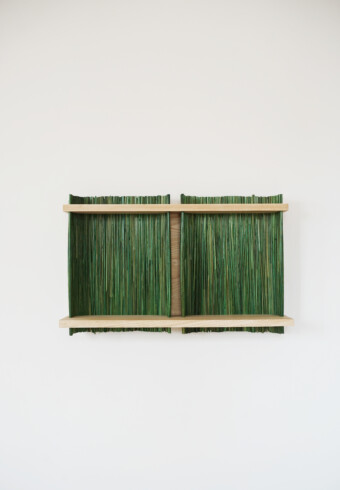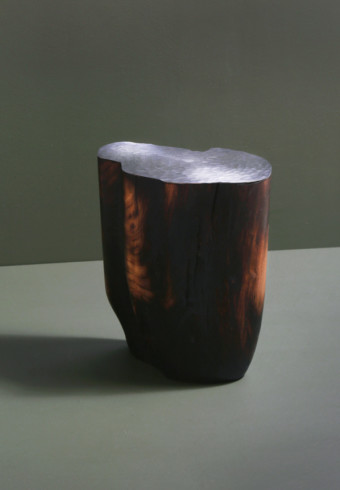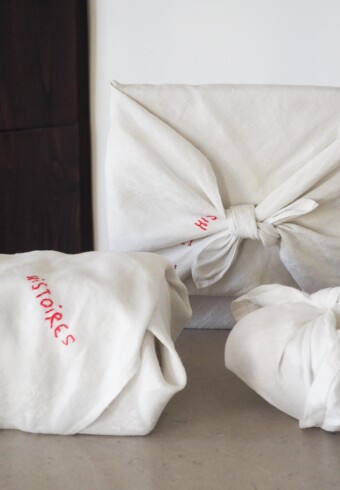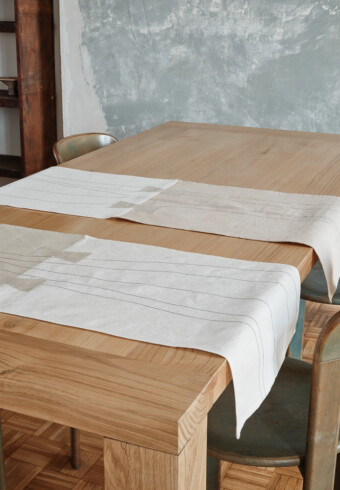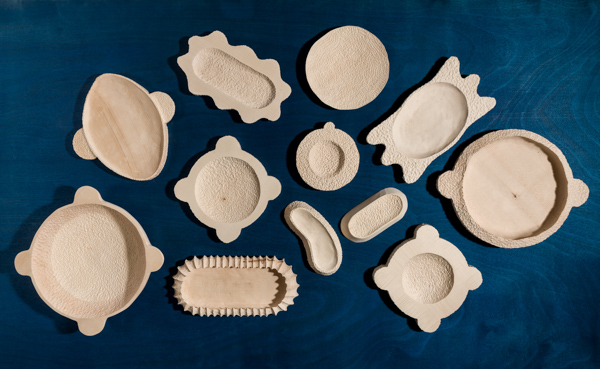
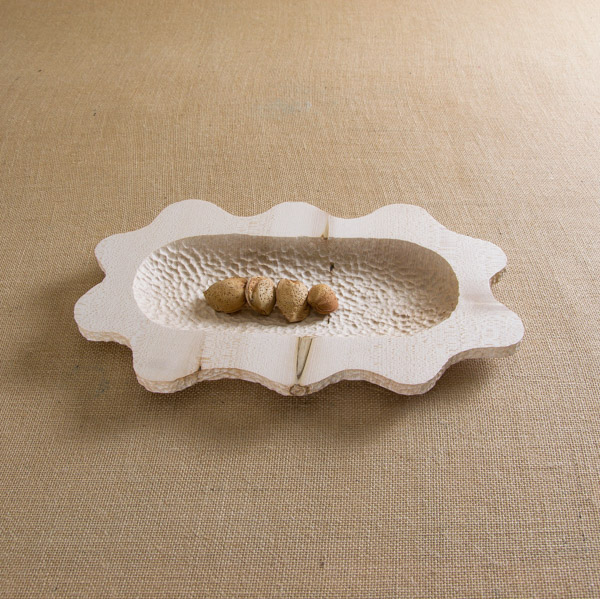
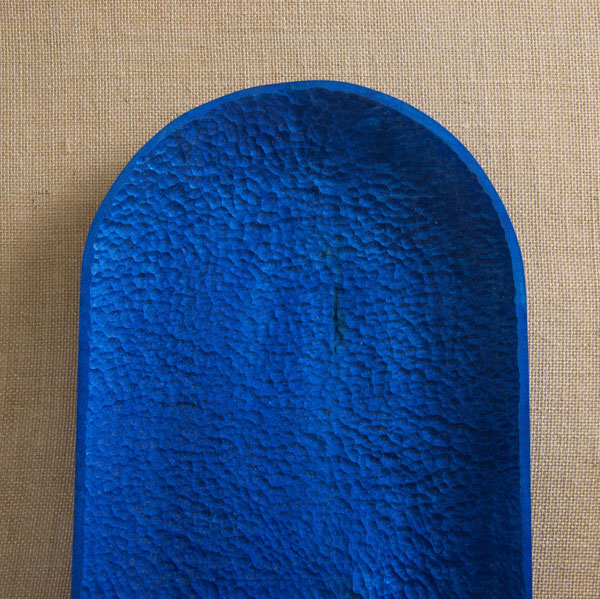
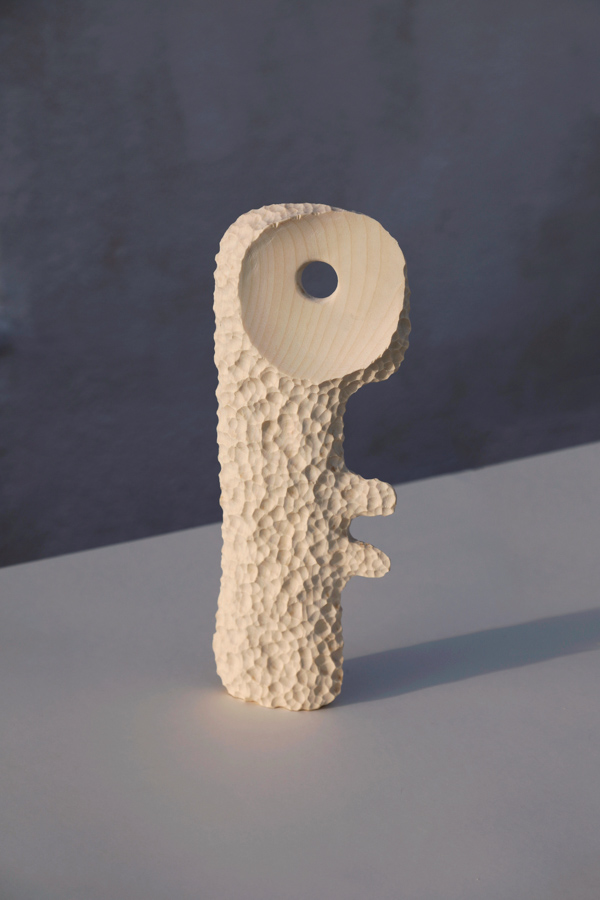
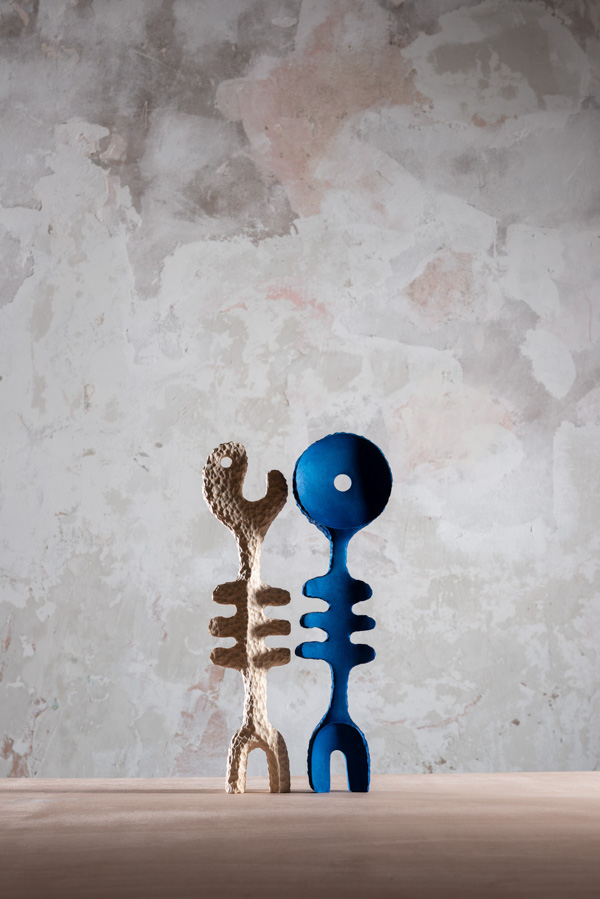
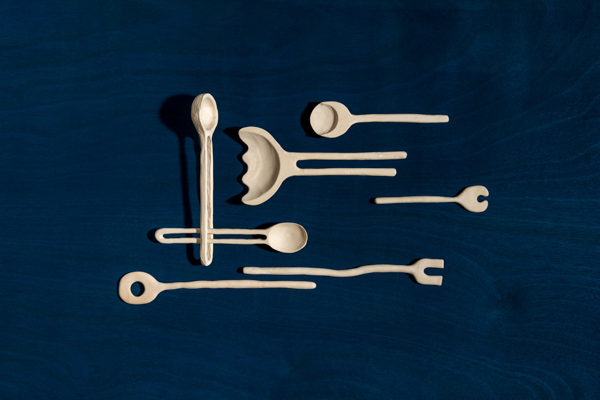

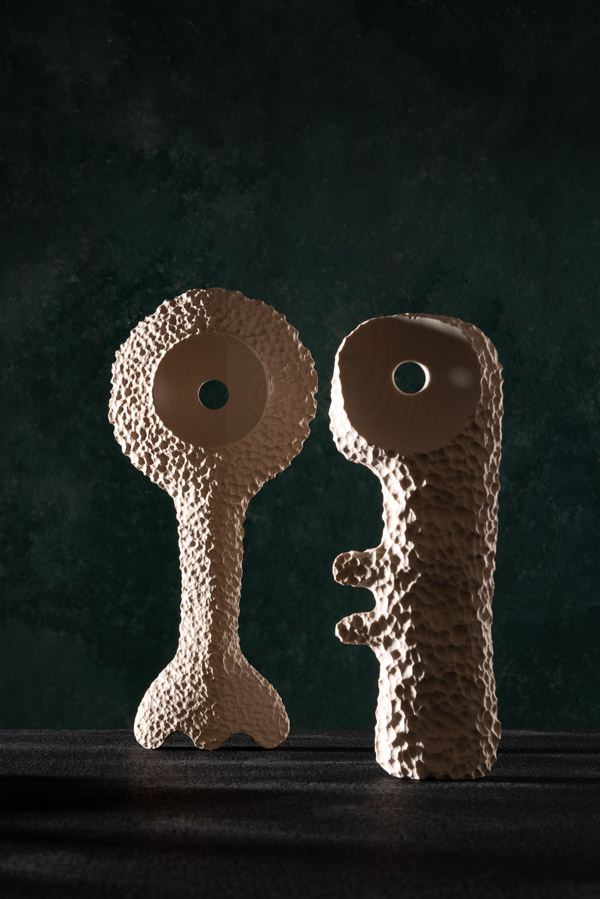
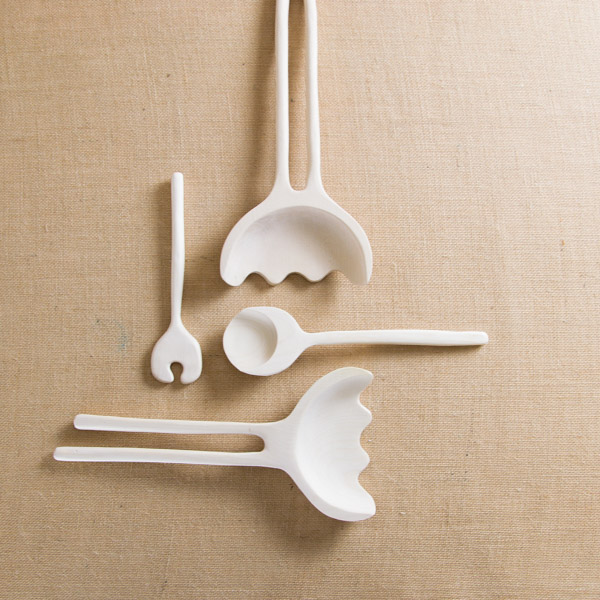
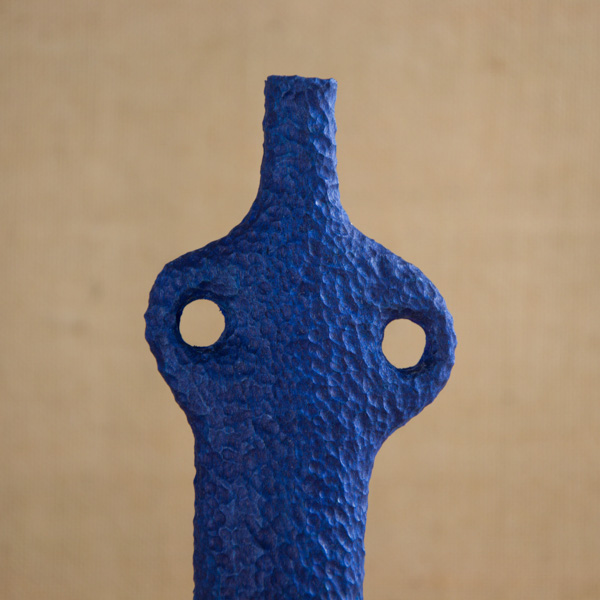
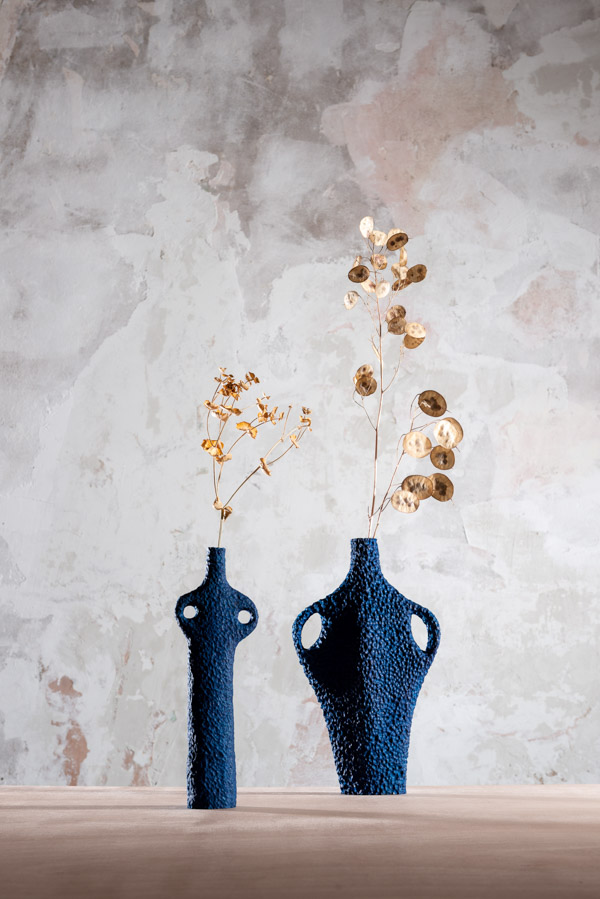
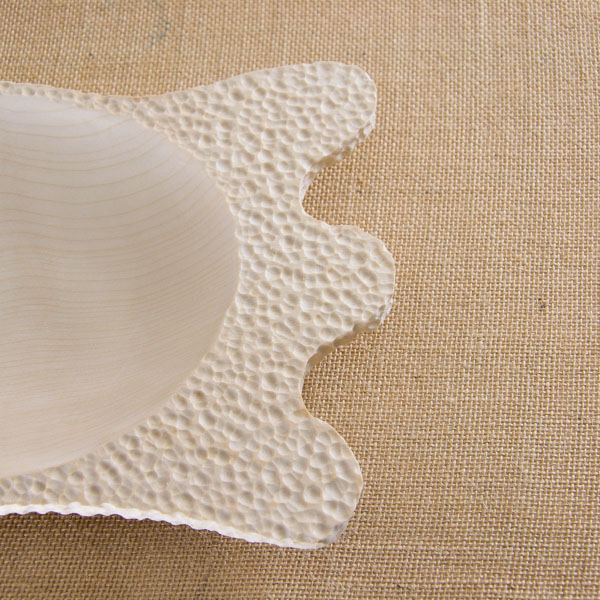
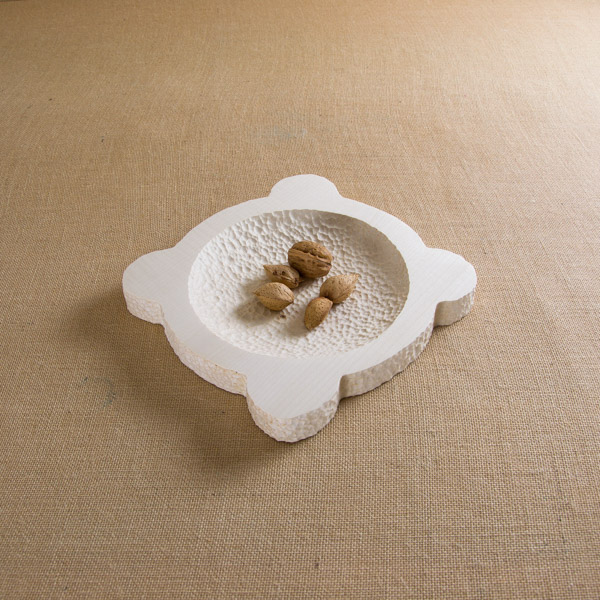
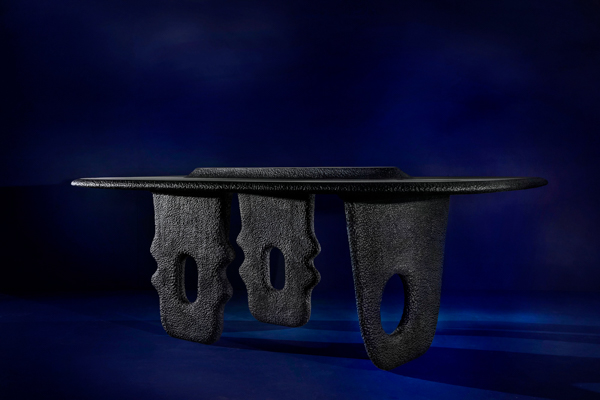
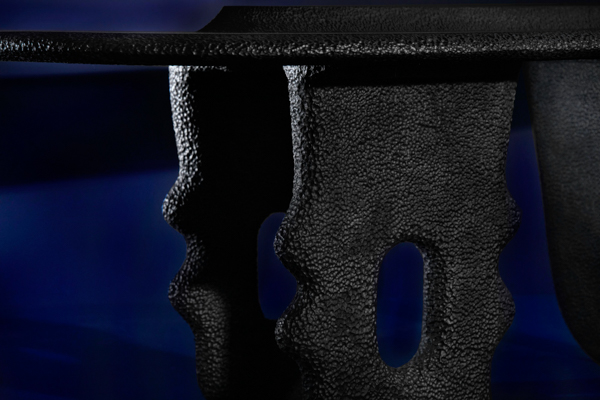
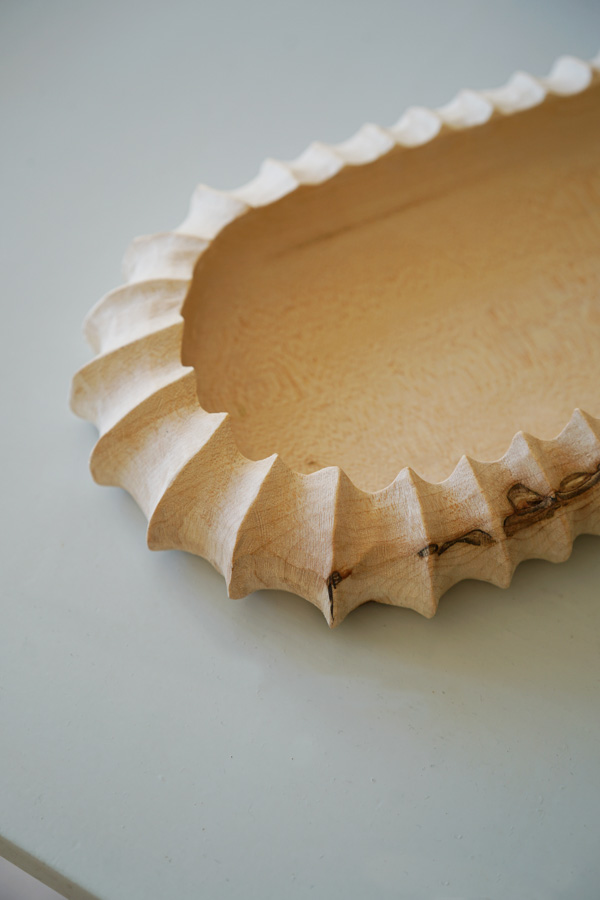
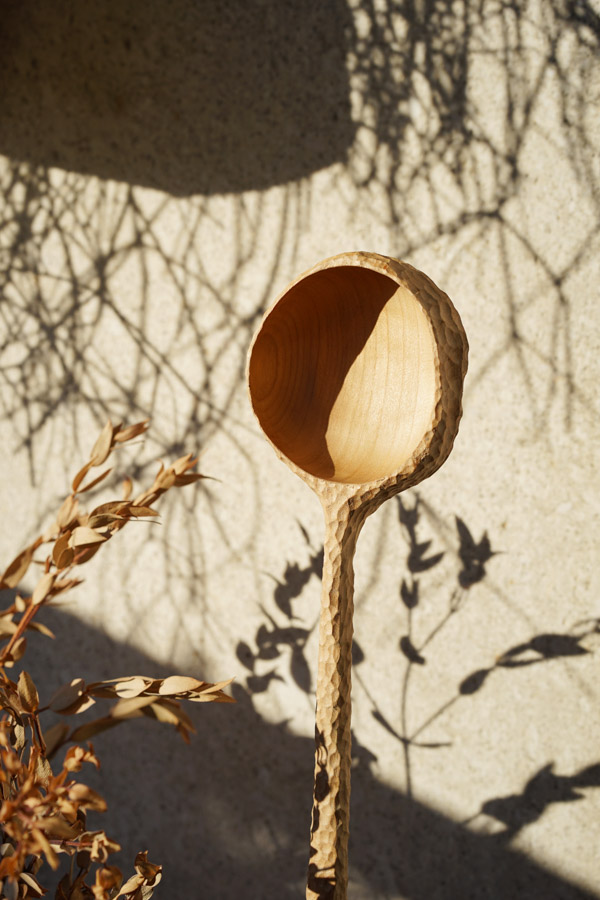
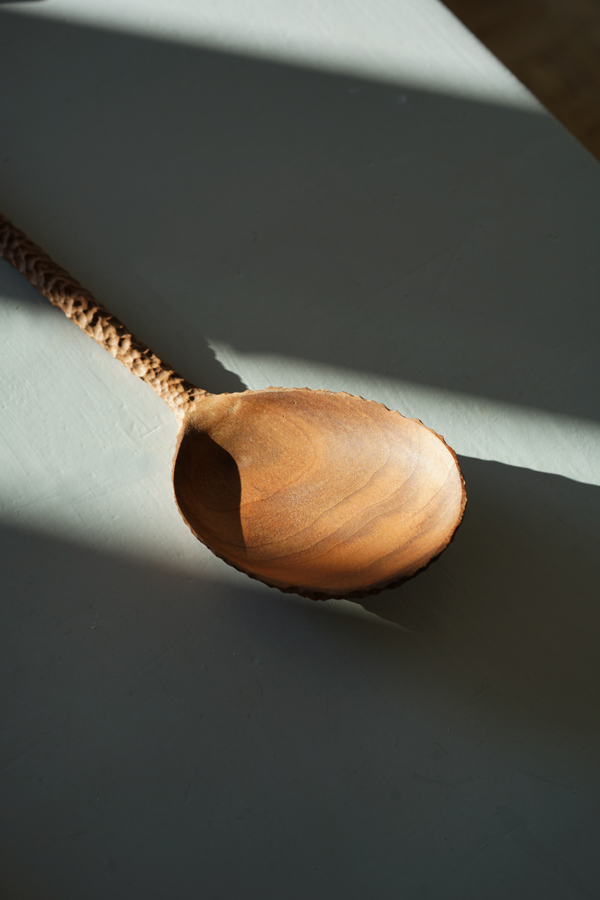
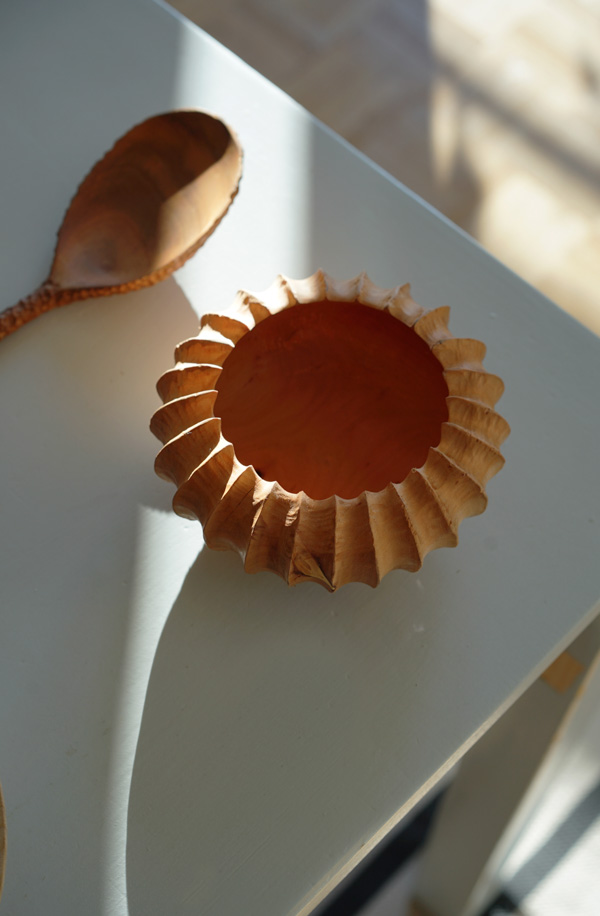
Paul Demarquet & Romain Carlès Carlès Demarquet Workshop

It is in Marseille that the Atelier Carlès Demarquet, composed of Romain and Paul, shapes the material. Both carpenters and sculptors, he creates pieces that question, that question. Their very experimental approach then leads them to propose new textures and new colors. The species chosen, mainly local, are worked with both manual and electric tools, thus combining traditional know-how and technology. Inspired by ancient and Mediterranean civilizations, Romain and Paul invite us through their pieces to dive into a mysterious imagination.
Was it a matter of course for both of you to work with wood?
Paul : It was not always easy for me. I started making wooden objects quite late, at age 24, primarily for fun. It was by making my first pieces that I began to realize it, by telling myself that I could do this all my life without getting tired of it, by realizing that the field of possibilities was immense. I decided at that time to do a CAP in evening classes at the Boulle School in Paris and then I created my workshop.
Roman : I discovered woodworking in my late teens with an uncle who was a woodturner, then around 20 with friends who were carpenters. It was only when I was 22 that I decided to devote myself fully to it, by enrolling in cabinetmaking with the Compagnons du Tour de France. It is a material that today is part of my life like no other and that I constantly rediscover, whether in sculpture, contemporary art, or architecture.
So you started your practice of wood alone, then the Atelier Carlès Demarquet duo was formed. Can you tell us about this meeting?
We met at Ici Marseille, a shared workshop that brings together various crafts in Marseille. We quickly understood that we both wanted to do sculpture, while sharing common influences and aesthetic tastes. So we decided to go to the Alps for two weeks to experiment with new techniques and see if anything came out. During this “residency”, there was a lot of discussion about what could unite us around a contemporary sculpture project. Our desire to talk about the Mediterranean, for example, or to muddy the waters with the effects of matter. We then experimented with textures that could give wood a mineral or organic appearance. We subsequently created a series of small sculpted objects taking up this aesthetic. We wanted to continue to refine our technique and to work on the finishing details and the coloring in the mass. The production of small objects was also a way of appropriating the creative universe in which we imagined developing ourselves.
What does this work as a duo bring you? How are you used to working?
It is an approach that is both delicate and very rewarding. Doing creation involves a personal approach, quite intimate and instinctive. So we try to keep a space of freedom in our collaboration. Sometimes we draw together, sometimes separately, and we try to engage in a fluid creative dialogue. Each piece that we sculpt is the result of common ideas and the addition of our respective imaginations. Usually a prototyping step follows, often on a small scale. Each person then sculpts one or more of the objects whose idea emerged during the drawing phase, intervening regularly on the piece that the other is sculpting. It's a four-handed job that allows us to move forward with more certainty. Finally, working in pairs allows us to enrich our creative vision, to have a less subjective point of view and to move forward more calmly in our approach.
How do you select the essences you work with?
We only use so-called “country” wood, therefore coming from French farms. To date, the species we mainly work with is sycamore maple. Our coloring work requires a very white wood so as not to modify the color that we apply. Maple is also a wood suitable for carving because it is homogeneous and with a fine grain.
Experimentation with new textures and colors is omnipresent in your practice. What are you looking for through it?
For us, it is a question of developing an imagination that would move away from “classic” woodcarving, to leave the door open to other projections. The textures and the hue allow us this, by creating confusion on the material. At first glance, some of our pieces may appear to be made of stone, plant material, seashells or coral.
The universe of your pieces revolves around the Mediterranean, by what are you more specifically inspired?
The sea is our main source of inspiration, whether it is ancient Mediterranean civilizations or the seabed. But what inspires us more particularly is the possibility of taking this context to deploy our imagination. We can then imagine, for example, objects that belonged to a mysterious engulfed civilization. Or statues dedicated to strange ancient deities.
You recently presented a new project, an amazing table, which takes you to new dimensions. Will this influence your next creations?
Certainly ! After having produced this first series of pieces which allowed us to refine our purpose and our technique, the creation of this table is a new step. This is our first large sculpture. And now that we've tasted it, we love it! It also gave us confidence in our ability to sculpt large volumes, and lots of ideas for the future.
Can you show us your selected pieces for the OROS market ?
It is a spoon in American walnut and another in French walnut, a dish in maple and a small bowl in cherry wood. The bowl is made on a wheel and then sculpted, the other pieces are entirely made in free sculpture. The texture of the two spoons is a gouged texture found on most of the pieces in our first series of objects. The bowl and the dish, for their part, are covered with grooves, which can recall the shapes of shells as well as antique manufactured objects.


















- Photographer: Emmanuelle Roule photos 16, 17, 18, 19
- Location: Marseille, France
- Website: https://www.ateliercarlesdemarquet.com
Share
